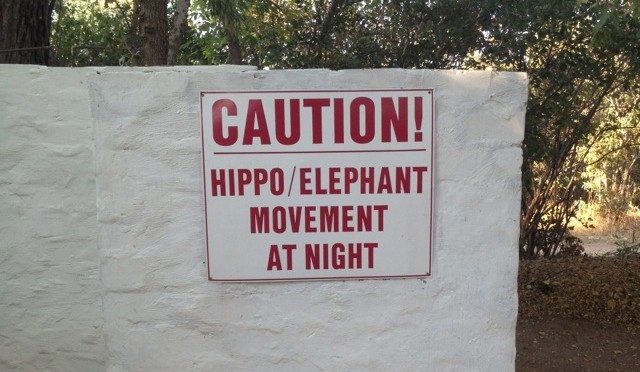After leaving the Okavango Delta, we drove back into Namibia. On paper, the route sounds confusing: Namibia to Botswana, then back to Namibia before driving into Botswana again? Rest assured that we weren’t actually backtracking; instead, we were transiting through and spending the night in the Caprivi Strip – Namibia’s 450km-long panhandle, which juts out over Botswana and underneath Angola and Zambia.1
The border post where we exited Botswana deposited us directly into Namibia’s Bwabwata National Park, where we were treated to an informal game drive as we drove north towards the Caprivi Strip’s main east/west highway. Although we didn’t seek out watering holes or anywhere that animals might congregate, we still had incredible luck with our sightings. We saw everything from the more common animals (impala, kudu, warthogs) to some of the iconic African animals (elephants, buffaloes, giraffes, zebras, hippos, wildebeests) to varieties of antelope we hadn’t yet spotted (roan antelopes and red lechwes). One of the more memorable sightings was an enormous troop of baboons with many small baboons romping around.
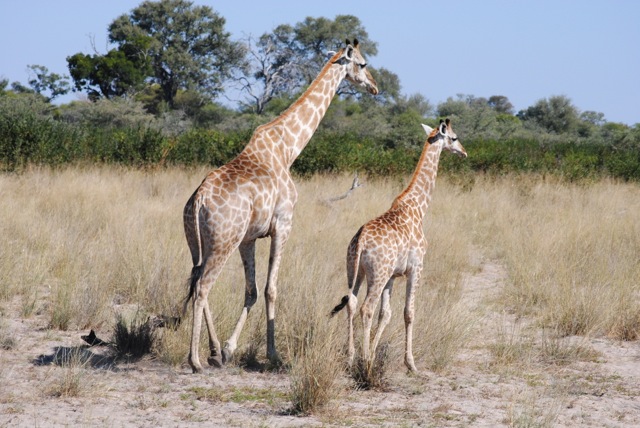
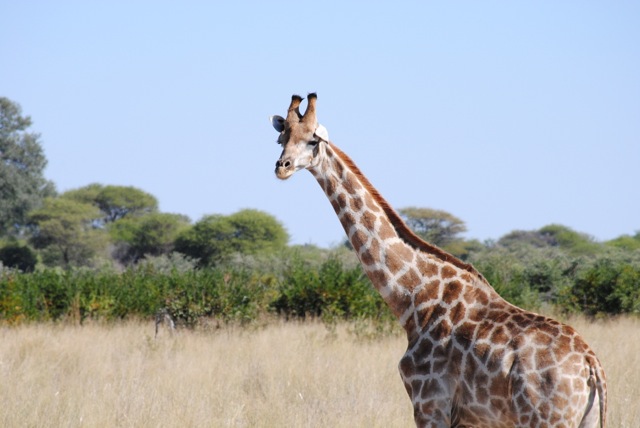
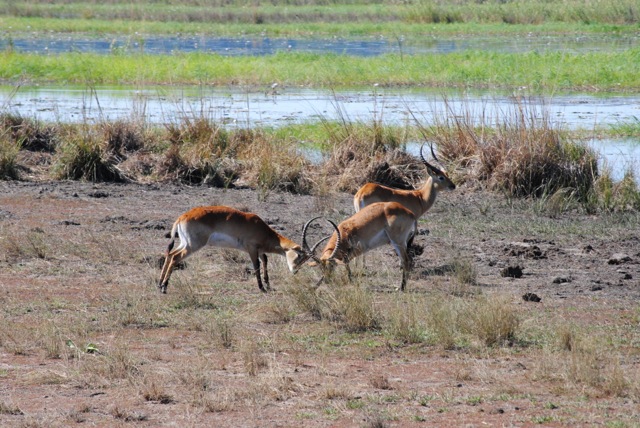
Even after we left the confines of the park, we continued to spot animals, including a large herd of elephants and some ground hornbills.
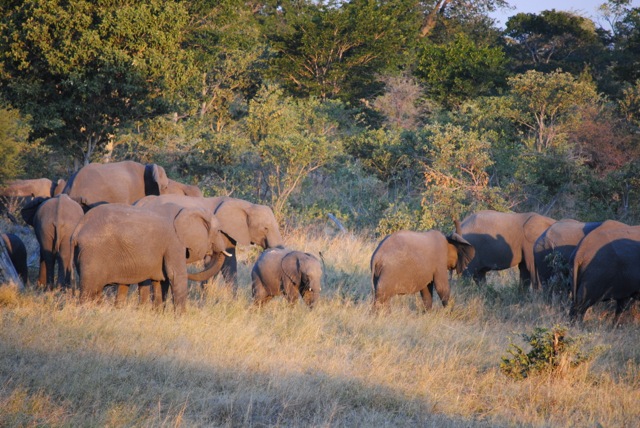
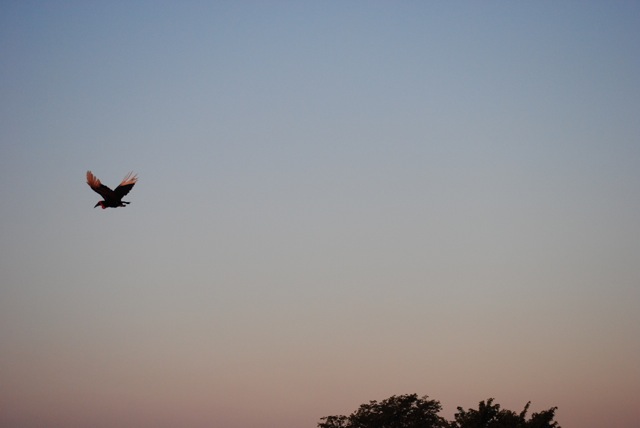
We arrived at Namushaha Lodge, where we would be camping, just before dark and began rolling out our tents. I was wary of our tent placement, as the ground seemed to slope slightly into a river and we could hear the distinctive grunt of hippos. I wasn’t so much worried that a hippo would climb out of the river to attack us; I was more worried that a hippo would lumber up out of the river in the dark and be displeased to find us in its path.
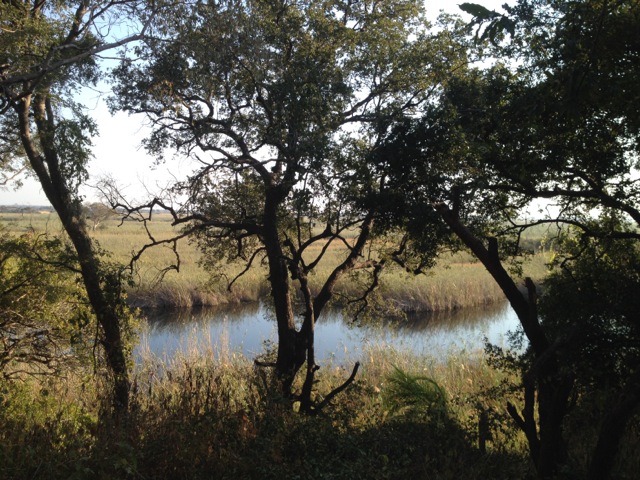
The sign posted on the bathroom did nothing to assuage my concerns.
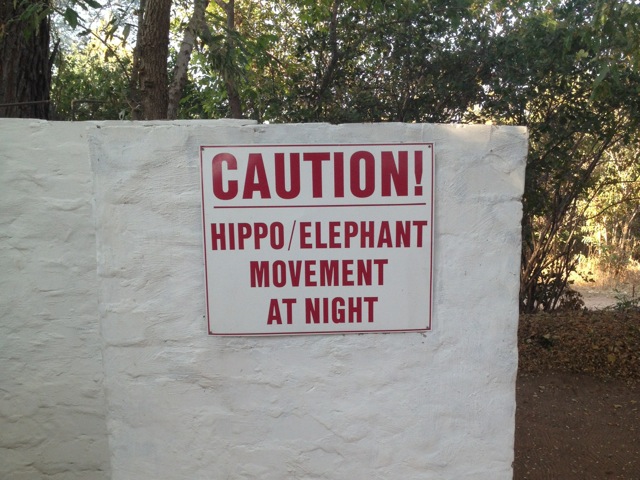
Neither did the sign on the road between the lodge and our campsite.
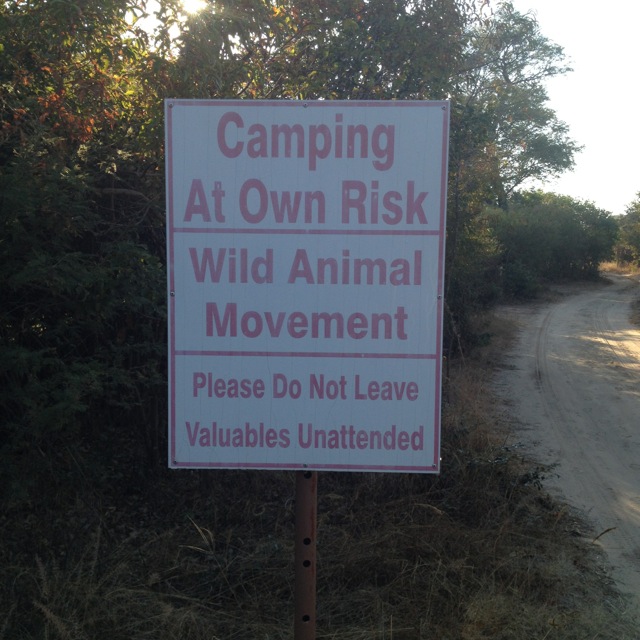
The lodge staff wouldn’t let us walk between the lodge and the campsite at night without a guide, warning us to be careful of the elephants.
In the morning, we discovered we had set up our tent underneath a fruit tree – something that the guide for our walk around one of the islands in the Okavango Delta had specifically warned us to avoid.2 Thankfully, the elephants didn’t seem interested in the citrus fruit growing on particular tree under which we had unwittingly camped.
In the morning, we visited the Namushasha Cultural Centre. Unlike our previous cultural visits with the Himba people and the San people, on this occasion we weren’t visiting where these people actually lived. Instead, the Namushasha Cultural Centre was an example village constructed to assist visitors in understanding traditional life in the area. It combined structures and cultural objects with a series of educational posters explaining various aspects of life in a village, including how chiefs are selected. The faux village was constructed around an enormous baobab, and, for me, the highlight of the trip was getting to taste the baobab seeds. You don’t actually eat the seeds, but eat the part clinging around the seed, sort of like a tamarind.

Where We Stayed:
☆ Namushasha Lodge. Two-and-a-half goats. The view was nice, but the constant warnings about elephants and hippos put me on edge. Also, since there were no lights in the bathroom, it was frustrating to have to wait for a fire to be constructed and the water to be heated while the light faded.
1 To best illustrate this, check out the map of where we’ve been that Marc keeps dutifully updated whenever we have a reliable internet connection.
2 I had taken away two bits of wisdom from that walk: (1) dried elephant dung can be used as mosquito repellent, and (2) never, ever set up your tent underneath a fruit tree.

